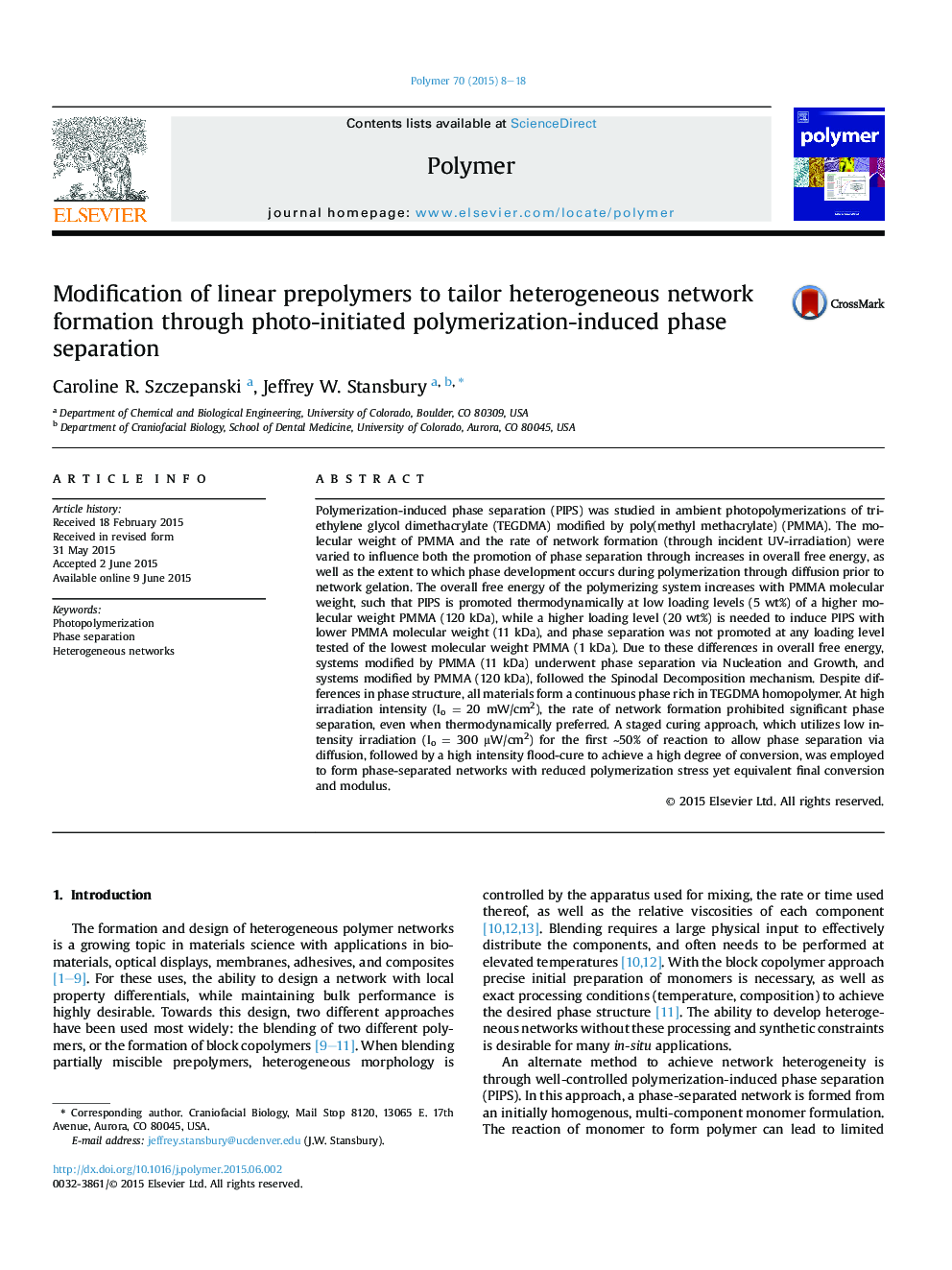| کد مقاله | کد نشریه | سال انتشار | مقاله انگلیسی | نسخه تمام متن |
|---|---|---|---|---|
| 5179926 | 1502536 | 2015 | 11 صفحه PDF | دانلود رایگان |
- Phase separation was studied in TEGDMA matrices modified by PMMA.
- Three different PMMA chain lengths were explored: 1Â kDa, 11Â kDa, 120Â kDa.
- Increased PMMA chain length decreased free energy and favored phase separation.
- Rate of network formation was modulated to change the extent of phase separation.
- TEGDMA/PMMA networks with significantly reduced stress were designed.
Polymerization-induced phase separation (PIPS) was studied in ambient photopolymerizations of triethylene glycol dimethacrylate (TEGDMA) modified by poly(methyl methacrylate) (PMMA). The molecular weight of PMMA and the rate of network formation (through incident UV-irradiation) were varied to influence both the promotion of phase separation through increases in overall free energy, as well as the extent to which phase development occurs during polymerization through diffusion prior to network gelation. The overall free energy of the polymerizing system increases with PMMA molecular weight, such that PIPS is promoted thermodynamically at low loading levels (5 wt%) of a higher molecular weight PMMA (120 kDa), while a higher loading level (20 wt%) is needed to induce PIPS with lower PMMA molecular weight (11 kDa), and phase separation was not promoted at any loading level tested of the lowest molecular weight PMMA (1 kDa). Due to these differences in overall free energy, systems modified by PMMA (11 kDa) underwent phase separation via Nucleation and Growth, and systems modified by PMMA (120 kDa), followed the Spinodal Decomposition mechanism. Despite differences in phase structure, all materials form a continuous phase rich in TEGDMA homopolymer. At high irradiation intensity (Io = 20 mW/cm2), the rate of network formation prohibited significant phase separation, even when thermodynamically preferred. A staged curing approach, which utilizes low intensity irradiation (Io = 300 μW/cm2) for the first â¼50% of reaction to allow phase separation via diffusion, followed by a high intensity flood-cure to achieve a high degree of conversion, was employed to form phase-separated networks with reduced polymerization stress yet equivalent final conversion and modulus.
266
Journal: Polymer - Volume 70, 23 July 2015, Pages 8-18
